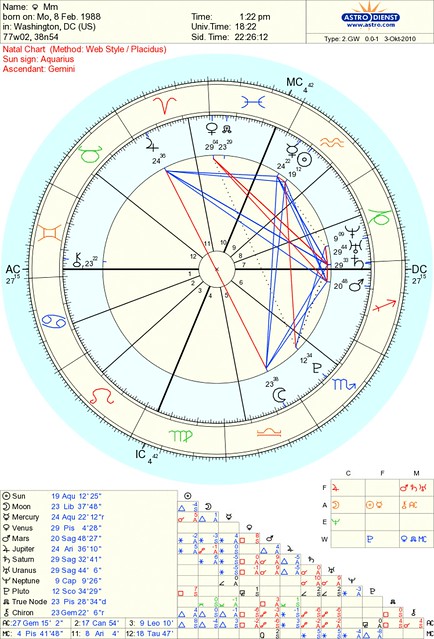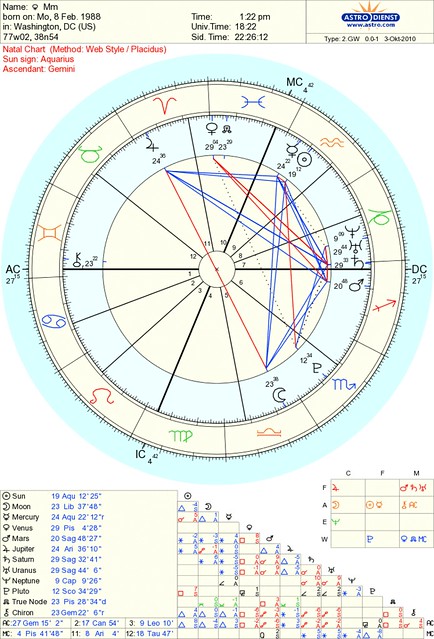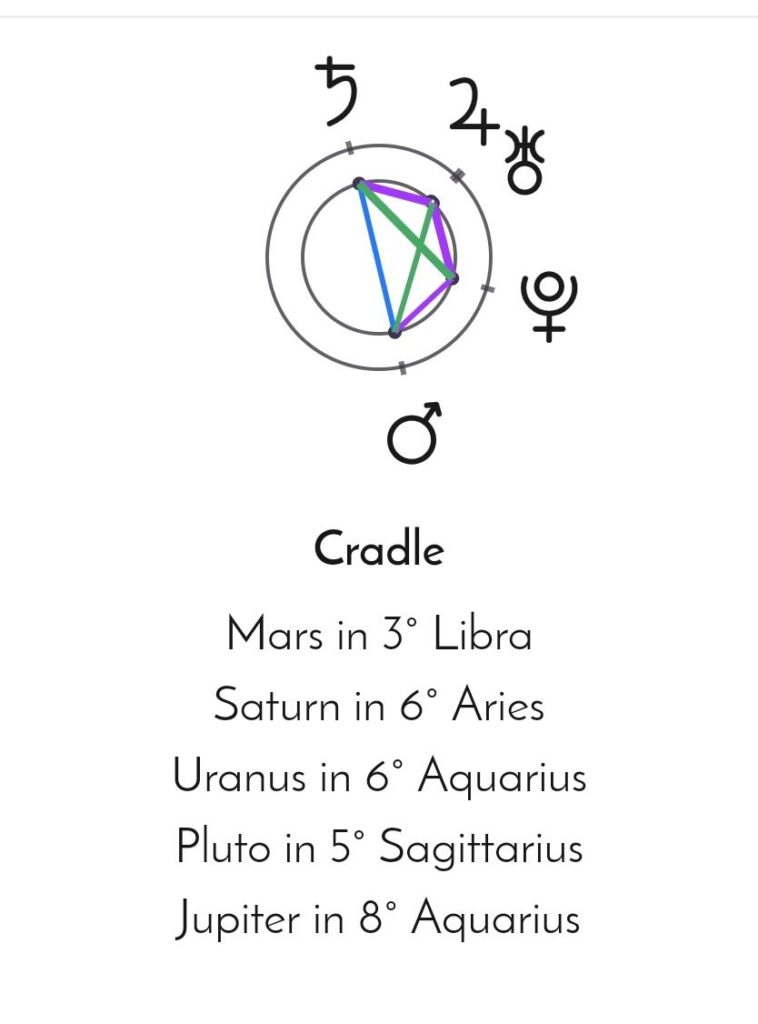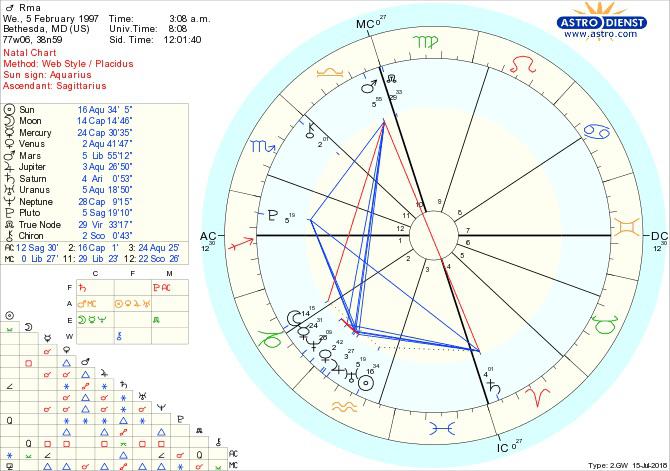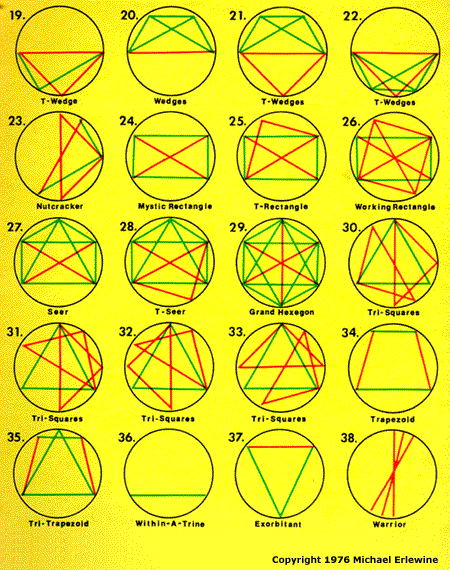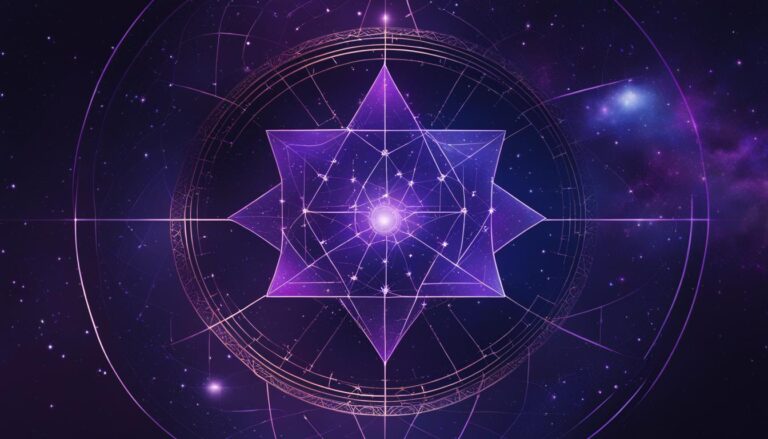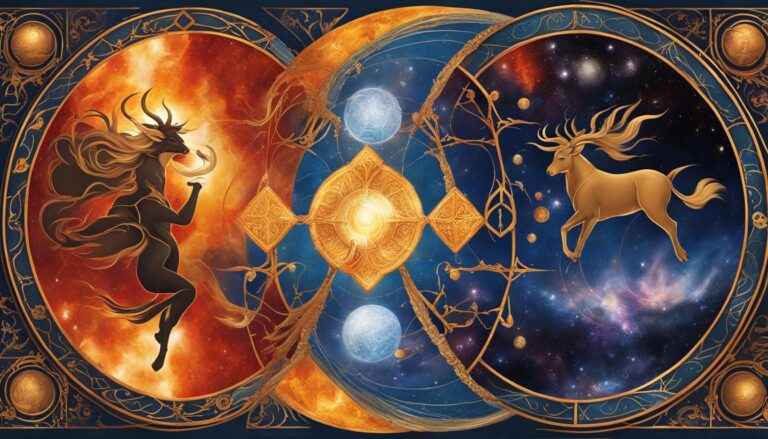Astrology enthusiasts rejoice! We’re here to unravel the mysteries behind a fascinating celestial configuration known as the Cradle. In this article, we’ll explore the concept of a Cradle in astrology, providing you with insight into its significance and how it can impact your horoscope. Get ready to discover the hidden connections and energy dynamics that lie within this captivating celestial pattern.
This image is property of qph.cf2.quoracdn.net.
Definition of a Cradle in Astrology
A cradle in astrology is a configuration of planets and aspects that resembles a cradle shape when plotted on an astrological chart. It is formed by a combination of planets in specific positions, creating a supportive and harmonious energy pattern. The cradle is believed to indicate a significant potential for growth, transformation, and deep emotional connection in the areas of life represented by the planets involved.
Key features of a Cradle
The key features of a cradle include the presence of three planets forming a triangular shape in the chart, with two of the planets forming a sextile aspect, and the third planet forming an opposition aspect with the other two. The sextile aspect represents opportunities and easy flowing energy, while the opposition aspect brings a sense of tension and challenge. Together, these aspects create a dynamic and transformative energy within the cradle configuration.
Meaning and significance of a Cradle
The cradle configuration holds a deep meaning and significance in astrology. It represents a period of intense personal growth and transformation, where individuals are guided to explore and develop their potential. The supportive and harmonious energy within the cradle encourages individuals to embrace new experiences and overcome challenges, ultimately leading to greater self-awareness and fulfillment. The cradle also symbolizes the need for balance and integration of opposites in order to achieve harmony in various aspects of life.
How a Cradle is formed in an astrology chart
A cradle is formed in an astrology chart when three or more planets align to create a triangular shape, with two sextile aspects and one opposition aspect. The planets involved in a cradle configuration can be from any zodiac sign, but their placements and aspects are crucial in determining the specific dynamics and interpretation of the cradle. The formation of a cradle indicates a unique combination of energies that will influence the individual’s life experiences and personality traits.
Types of Cradles
There are two main types of cradles in astrology: major cradles and minor cradles. Each type has its own distinct characteristics and interpretation.
Major Cradle
A major cradle is a more significant and powerful configuration compared to a minor cradle. It involves three or more planets forming a triangular pattern, including two sextile aspects and one opposition aspect. Major cradles have a greater impact on the individual’s life and often indicate a significant period of growth and transformation.
Minor Cradle
A minor cradle, on the other hand, is a less prominent configuration compared to a major cradle. It also consists of three or more planets forming a triangular shape with sextile and opposition aspects. However, minor cradles may have a milder influence and are usually considered as supporting factors in the individual’s life rather than major transformative forces.
Major Cradle
Formation of a Major Cradle
A major cradle is formed when three or more planets align to create a triangular pattern, with two planets forming a sextile aspect and one planet forming an opposition aspect with the others. This configuration creates a dynamic and transformative energy that is central to the individual’s personal growth and development.
Characteristics of a Major Cradle
A major cradle is characterized by its powerful and transformative energy. It signifies a period of intense personal growth, where individuals are likely to experience significant changes and transformations in their lives. The major cradle configuration brings together the harmonious flow of the sextile aspects, which facilitate opportunities and easy integration of energies, with the tension of the opposition aspect, which challenges the individual to find balance and resolution.
Interpretation of a Major Cradle
The interpretation of a major cradle depends on the specific planets and signs involved in the configuration. However, in general, a major cradle suggests a strong emphasis on personal growth, emotional healing, and the integration of opposing energies. It indicates a time of transformation and empowerment, where individuals are guided to embrace their true potential and overcome challenges. The major cradle encourages deep self-reflection, emotional connection, and the exploration of inner desires and passions.
Minor Cradle
Formation of a Minor Cradle
A minor cradle is also formed by three or more planets that create a triangular pattern in the astrology chart. It consists of two sextile aspects and one opposition aspect, similar to a major cradle. However, the influence and impact of a minor cradle are usually milder and less prominent compared to a major cradle.
Characteristics of a Minor Cradle
While a minor cradle may have a less significant impact, it still contributes to the individual’s overall energy dynamics. It represents a supportive and harmonious energy within specific areas of life, indicating opportunities for growth and development. The minor cradle configuration often acts as a subtle guiding force, providing a sense of ease and flow in those areas represented by the planets involved.
Interpretation of a Minor Cradle
The interpretation of a minor cradle depends on the planets and signs involved, but it generally suggests a supportive energy that aids personal growth and development. It represents opportunities for individuals to explore their potential, develop their skills, and enhance their understanding in specific areas of life. The minor cradle encourages individuals to embrace these opportunities and make the most of the harmonious energy available to them.
This image is property of farm5.static.flickr.com.
Cradle Configurations
Cradle configurations can vary depending on the aspects formed by the planets involved. Four common cradle configurations include cradles with opposition, trine, sextile, and inconjunct aspects. Each configuration has its own unique dynamics and implications.
Cradle with Opposition Aspect
A cradle with an opposition aspect involves two sextile aspects connected by a planet in opposition to both. This configuration brings together the harmonious flow of the sextile aspects and the tension of the opposition aspect, creating a dynamic and transformative energy. This cradle configuration encourages individuals to find balance and resolution between opposing forces in order to achieve growth and harmony.
Cradle with Trine Aspect
A cradle with a trine aspect involves two planets forming a sextile aspect, with a third planet forming a trine aspect with both. The trine aspect represents a harmonious and supportive energy, enhancing the opportunities for growth and development within the cradle configuration. This cradle encourages individuals to embrace the flowing energy and make the most of the favorable circumstances presented to them.
Cradle with Sextile Aspect
A cradle with a sextile aspect involves two planets forming a sextile aspect, with a third planet forming a sextile aspect to one of the planets and an inconjunct aspect to the other. This configuration combines the harmonious flow and supportive energy of the sextile aspects with the need for adjustment and integration represented by the inconjunct aspect. This cradle configuration encourages individuals to find balance and make necessary adjustments to fully utilize the opportunities available to them.
Cradle with Inconjunct Aspect
A cradle with an inconjunct aspect involves two planets forming a sextile aspect, with a third planet forming an inconjunct aspect to both. The inconjunct aspect represents a need for adjustment and integration, challenging individuals to find balance and resolution between conflicting energies. This cradle configuration encourages individuals to embrace change and adaptability in order to fully benefit from the opportunities presented within the configuration.
Effects and Impact of a Cradle
The presence of a cradle in an astrology chart can have profound effects and impacts on the individual’s life. These effects can be both positive and challenging, ultimately leading to personal growth and transformation.
Enhancement of individual’s potential
A cradle configuration serves as a catalyst for personal growth and development. It enhances the individual’s potential by providing opportunities for self-discovery, emotional healing, and exploration of their passions and desires. The harmonious and supportive energy within the cradle helps individuals unlock their true potential and make the most of their unique talents and abilities.
Challenges and growth opportunities
While the cradle configuration brings supportive and harmonious energy, it is not without its challenges. The tension and opposition aspects within the cradle present individuals with opportunities for growth and transformation. These challenges encourage individuals to confront and overcome obstacles, facilitating personal growth and self-awareness. The cradle configuration acts as a guide in navigating these challenges and embracing these growth opportunities.
Emphasis on specific life areas
Depending on the planets and aspects involved, the cradle configuration places emphasis on specific areas of life. It may highlight a person’s emotional well-being, relationships, career, or other areas represented by the planets involved. The cradle acts as a magnifying lens, drawing attention to these areas and encouraging individuals to focus their energy and efforts for growth and development.
This image is property of i.redd.it.
Signs and Planets in a Cradle
The signs and planets involved in a cradle configuration play a significant role in shaping its dynamics and interpretation. Here are some commonly observed signs and planets in a cradle:
Signs commonly involved in a Cradle
A cradle configuration can involve any combination of zodiac signs, but some signs are more commonly associated with this configuration. Cancer, Pisces, and Scorpio are often found in cradles due to their emotional depth and transformative qualities. These water signs add an emotional intensity and sensitivity to the cradle’s energy, enhancing the potential for deep emotional healing and personal growth.
Planets typically present in a Cradle
The planets involved in a cradle configuration vary depending on the individual’s birth chart. However, certain planets are often present in a cradle due to their influence on personal growth and transformation. The Moon, representing emotions and inner self, is commonly found in a cradle configuration. The outer planets, such as Pluto and Neptune, which symbolize deep transformation and spirituality, are also frequently involved. Additionally, personal planets such as Venus and Mars may be present, highlighting the individual’s relationships and passions within the cradle configuration.
Astrological Houses Associated with a Cradle
In astrology, the houses of the birth chart represent different areas of life. The houses influenced by a cradle configuration provide valuable insights into the specific life areas that are emphasized and impacted by the cradle’s energy.
Houses influenced by a Cradle
The houses most commonly influenced by a cradle configuration are the 1st, 4th, 7th, and 10th houses. The 1st house represents the individual’s self-image and personal identity, while the 4th house represents the emotional well-being and the home environment. The 7th house signifies relationships and partnerships, while the 10th house represents career and public image. The presence of a cradle in these houses suggests a strong influence and emphasis on these areas of life, indicating opportunities for growth and transformation in these specific domains.
Meanings and implications of these houses in relation to a Cradle
The presence of a cradle in these houses signifies the need for personal growth and transformation in the areas they represent. The cradle’s energy brings attention to self-development, emotional healing, relationship dynamics, and the individual’s career path. Individuals with a cradle in these houses are likely to experience significant changes and opportunities for growth in these areas, ultimately leading to a greater sense of fulfillment and self-actualization.
This image is property of i.redd.it.
Interpreting a Cradle in Astrological Readings
Interpreting a cradle in astrological readings involves analyzing the placement and aspects of the involved planets, considering the overall chart dynamics, and assessing the influence of the houses involved. Here are some key factors to consider when interpreting a cradle:
Examining planet placement and aspects
Analyzing the specific planets involved in the cradle provides valuable insights into the individual’s personal growth and development. The planets’ placements in signs and houses offer details about the energy dynamics and the areas of life influenced by the cradle. Examining the aspects between the planets helps understand the flow of energy within the cradle and assess the challenges and opportunities present.
Considering the overall chart dynamics
In addition to the cradle configuration, considering the overall dynamics of the birth chart is crucial in interpreting its significance. Examining the presence of other major aspects or configurations, such as squares or trines, sheds light on the individual’s life patterns and further enhances the interpretation of the cradle. Integrating the cradle’s energy into the broader chart dynamics provides a holistic understanding of the individual’s astrological influences.
Assessing the influence of the houses involved
The houses influenced by the cradle configuration have a significant impact on its interpretation. Analyzing the specific life areas represented by these houses provides insights into the nature of the growth and transformation experienced by the individual. Assessing the elements and qualities associated with these houses further enriches the interpretation, allowing for a more nuanced understanding of the cradle’s influence.
Examples of Cradle Interpretations
To illustrate the interpretation of a cradle in astrological readings, here are three examples:
Cradle in the 5th House
A cradle configuration in the 5th house, the house of self-expression, creativity, and romance, suggests a strong emphasis on these areas of life. The individual may be guided to explore their creative potential and express themselves authentically. The cradle’s transformative energy encourages the individual to embrace their passions and pursue their artistic or romantic endeavors. It may also indicate opportunities for personal growth through deep emotional connections with others.
Cradle involving Venus and Mars
A cradle involving Venus and Mars, the planets of love and passion, signifies a significant period of growth and transformation in the individual’s relationships and personal desires. The harmonious flow of energy between these planets enhances the potential for deep emotional connections and the expression of passionate desires. The opposition aspect challenges the individual to find balance between their needs and desires, leading to personal growth and the development of healthy relationships.
Cradle with multiple trine aspects
A cradle configuration with multiple trine aspects indicates a harmonious and supportive energy within the individual’s life. This configuration suggests an overall ease and flow in various areas of life, with multiple opportunities for growth and development. The trine aspects enhance the individual’s ability to navigate challenges and make the most of the favorable circumstances. It represents a period of growth and empowerment across different life domains.
In conclusion, a cradle in astrology is a significant configuration that indicates a period of growth, transformation, and personal development. Whether it is a major cradle or a minor cradle, the presence of this energy pattern highlights opportunities for self-discovery, emotional healing, and success in various domains of life. By understanding the specific planets, signs, aspects, and houses involved in the cradle configuration, individuals can gain valuable insights into their own potential and navigate the challenges and opportunities that come their way.
This image is property of www.angelfire.com.
- Unveiling the Truth: Are Scorpio and Pisces Soulmates? - January 13, 2024
- Understanding What a Pisces Man Dislikes in a Woman - January 12, 2024
- Unveiling Artists with Pisces Moon: Astrology Meets Artistry - January 11, 2024
